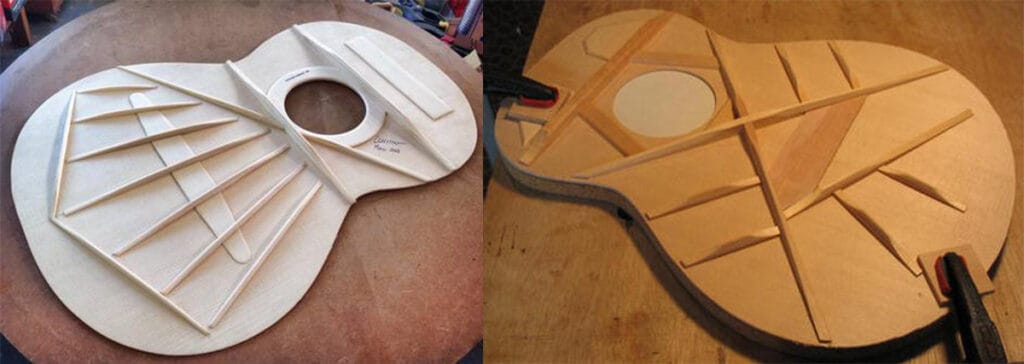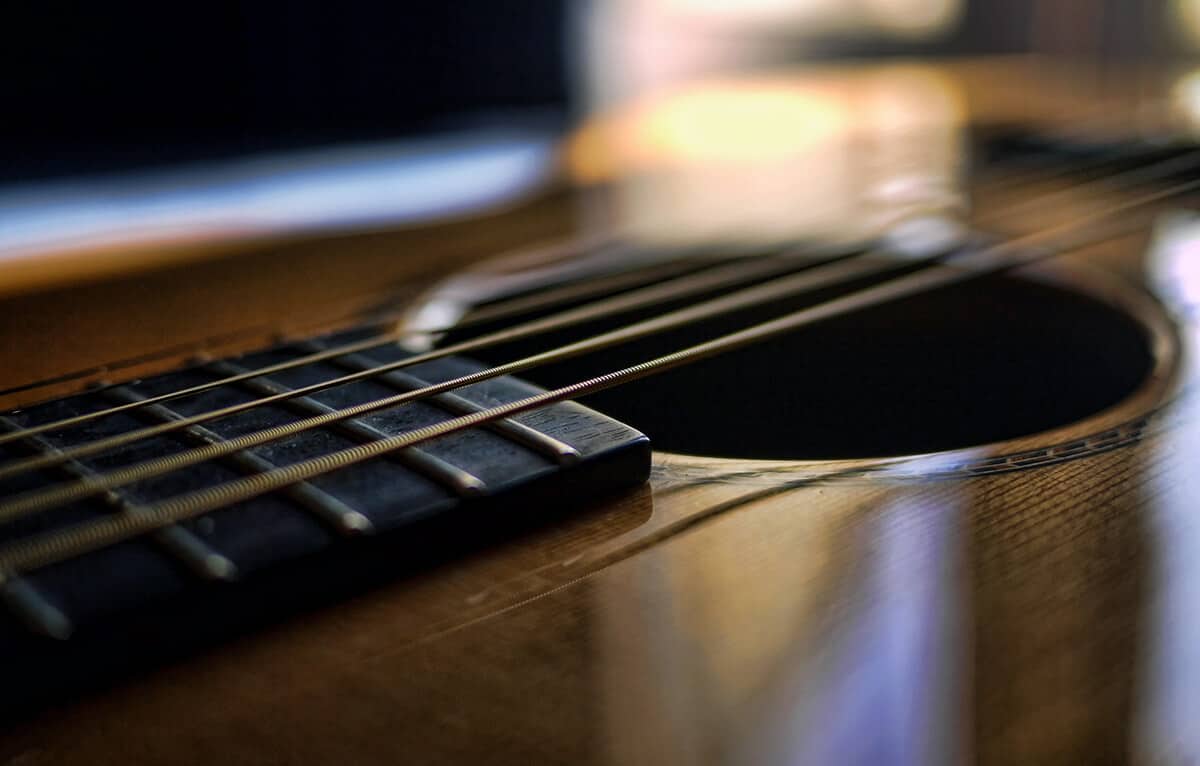If you are about to throw steel strings on your Classical guitar, STOP right there!
You‘ve probably heard that classical guitars are designed to be used with nylon strings. Now, if a classical guitar is the only instrument you have, you might be curious to try steel strings on it.
So, can you put steel strings on a classical guitar?
Here’s the TL;DR answer.
NEVER PUT STEEL STRINGS ON A CLASSICAL GUITAR. It has a thinner top and lighter bracing and is likely to break due to the higher tension of steel strings. Most classical guitars also don’t have a truss rod, so even lighter gauge steel strings will result in permanent damage if not snapping of the neck.
If you want to learn more about string tension and the differences in the construction and hardware of both guitars, read on!
Difference Between Acoustic and Classical Guitar
Classical guitars are designed to handle the tension of nylon strings (used to be gut strings earlier) and are hence built differently than steel string acoustic guitars.
We’ll mainly talk about the key differences related to hardware and construction.
1. Guitar Top and Bracing
A single look at the underside of the guitar top will tell you the whole story. The thickness of the top and bracing are a lot different between the two.

Whereas nylon string guitars have thinner tops and smaller, flexible braces (Fan bracing), acoustic guitars are more robust, with thicker tops and heavier more rigid bracing (X-bracing).
2. String Action
There is a significant difference between the two guitars in terms of string action, i.e. the separation between strings and frets (or fretboard).
Nylon strings guitars usually have higher action, around 3-4 mm. One exception is Flamenco, where the guitars have much lower action.
On the other hand, acoustic guitars have around 2-2.5 mm of string action. Although it’s a matter of personal preference, the action on steel string guitars will always be lower than a traditional classical guitar.
3. Truss Rod
Steel string acoustic guitars have a metal beam inside their neck, called the truss rod, which helps counteract the tension of the strings.
Classical Guitars traditionally don’t have a truss rod (some newer models do), since they don’t need one due to low tension of nylon strings. Even if your nylon string guitar has a truss rod, it’s not enough to counterbalance the tension of steel strings.
4. Nut
Nylon strings are much larger than steel strings, and the nut on classical guitars has wider slots for the same reason. It’s also higher than an acoustic guitar, so you will experience both intonation problems and poor playability.
Nylon vs. Steel Strings
Apart from being associated with specific music styles, Nylon and steel strings vary when it comes to string tension, thickness, and nature of the material used in construction.
Nylon strings are significantly thicker than steel strings and are made of a softer core, which in turn makes them softer to play.
Tension is the primary reason why a classical guitar can’t support the weight of steel strings. For all the mathematicians among us, here’s one set of data taken from D’Addario’s website.
A typical set of light-to-medium gauge steel strings puts around 160 – 180 lbs (72.6 – 81.6 kg) of combined tension on a guitar. On the other hand, a typical set of nylon strings comes out to be 80 lbs (36.3 kg) of combined tension.
Thus, steel strings put more than twice the amount of tension than nylon strings. A classical guitar cannot withstand that and will likely strain more than it can handle.
In fact, the tension on steel strings becomes so high as you go heavier on the gauge that it may bend the neck or affect intonation, even on a regular acoustic guitar.
Can You Put Steel Strings on a Classical Guitar?
Putting steel strings on a classical guitar might make it sound fantastic for a short amount of time before you find out that the guitar is ruined.
But seriously, don’t do that. You’ll find that in no time that the neck will permanently swell, bend, or warp until, eventually, the bridge rips off from the top of the body.
Even if your classical guitar has a truss rod, it’s not built to withstand the high tension. Over time, your top will belly up and the neck will snap.
Not only that, there are a few problems besides the physical damage of your instrument.
Steel-string bridges are angled to compensate for string tension (also tapered to accommodate the string thickness), while bridges on classical guitars are straight. This is going to result in poor intonation and thus, poor sound.
Also, as the high tension is likely to result in neck bending, the action on the higher regions of the neck will become way higher, making it unplayable.
Lastly, the frets on steel string guitars are made from harder materials, so it’ll damage the frets too. But your classical guitar won’t last long enough for that to happen.
Are There Any Alternatives to Steel Strings for a Classical Guitar?
If you want to play with steel strings, it’s best to use a guitar that’s specifically designed for them, such as an acoustic or electric guitar.
If you’re looking for a brighter sound similar to steel strings on a classical guitar, you can explore using “nylon-core” or “composite-core” strings.
These are designed to mimic the sound of steel strings while maintaining a tension that’s safe for classical guitar construction.
Conclusion
If you don’t want to ruin your guitar, then NO, don’t put steel strings on a classical guitar.
You can, however, do the vice-versa, i.e., put nylon strings on a steel string guitar. You won’t get the same sound or volume that way, but your guitar will mostly be fine in terms of physical damage (there might still be neck bending due to reduced tension).
Every instrument, be it a Classical guitar, Western flat-top (acoustic), Archtop, or Resonator, was designed to serve a particular musical style, and it’s wise to keep it that way. Nylon strings on classical guitar and steel strings on a steel string acoustic guitar.

I’m Pranshu. I’ve been a passionate guitarist, keyboardist, and music producer ever since I got my hands on a keyboard as a small child.
With Harmonyvine, my goal is to share tips and knowledge about music and gear with you. I also enjoy recording music and guitar covers, which you can check out on my Instagram page.


Where could I find an acoustic guitar with a wide neck like a classical guitar, with steel strings instead of nylon strings?